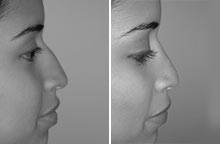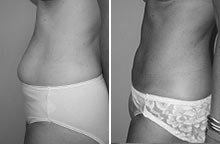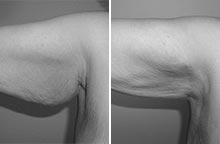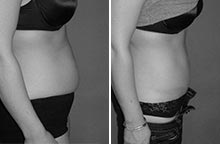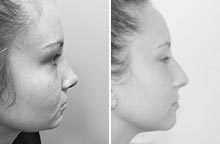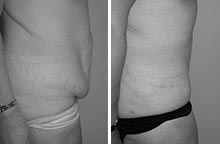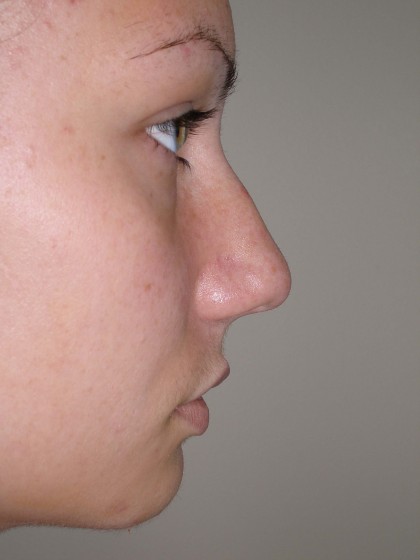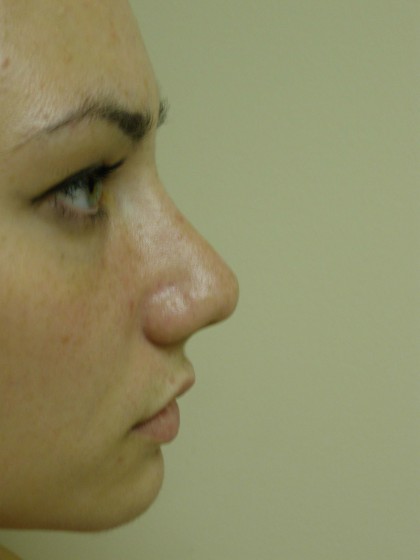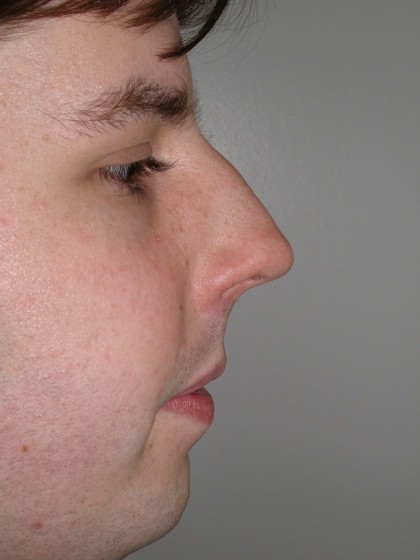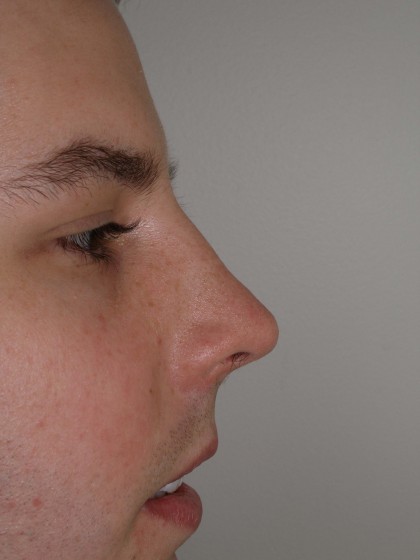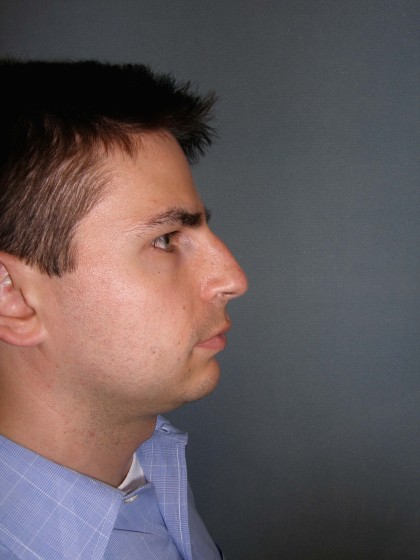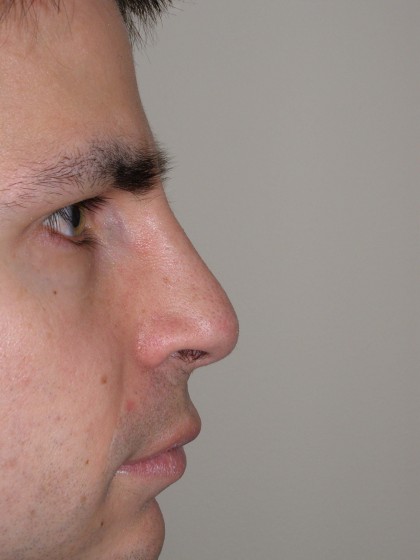Rhinoplasty
Consultations offered at our three convenient locations in New Jersey, Bergen County and Englewood, NJ
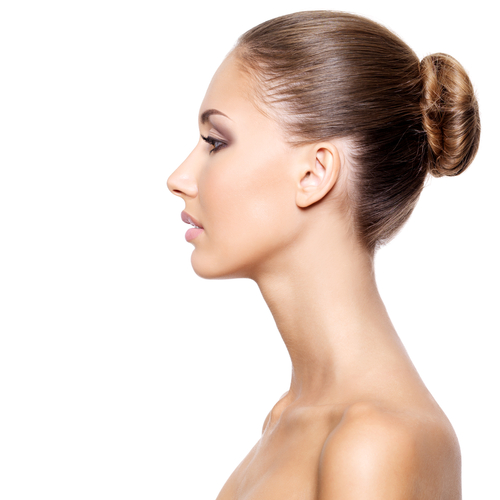
As the center focus of your face, your nose plays an important role in bringing balance and symmetry to the face.
The goal of Rhinoplasty is not to change how your features look, but simply enhance their beauty.
Contents
- 1 What is Rhinoplasty?
- 2 Reasons to Get a Rhinoplasty Procedure
- 3 Dr. Abramson on Rhinoplasty
- 4 Before and After Photos
- 5 Candidates
- 6 Preparing for Rhinoplasty
- 7 Consultation
- 8 Types of Rhinoplasty
- 9 How is Rhinoplasty Performed?
- 10 What Are the Pros and Cons of Open Rhinoplasty?
- 11 Closed Rhinoplasty’s Advantages and Disadvantages
- 12 Which Type of Rhinoplasty Should I Choose?
- 13 Find Out More Open and Closed
- 14 Recovery
- 15 How Long Is Recovery After Rhinoplasty?
- 15.1 Do Not Blow Your Nose
- 15.2 Tips to Keep the Swelling Down
- 15.3 Anti-Inflammatory Medication
- 15.4 Get Plenty of Rest
- 15.5 Avoid Nicotine and Alcohol
- 15.6 Eating and Spicy Food
- 15.7 How to Wear Glasses
- 15.8 Follow-up Appointments
- 15.9 Strenuous Activity
- 15.10 Facial Expressions
- 15.11 Sunlight
- 15.12 Take a Bath
- 16 Learn More About Recovery
- 17 Price
What is Rhinoplasty?
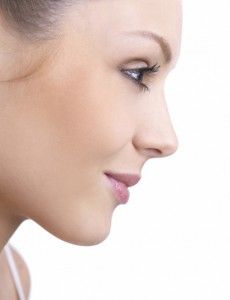
Rhinoplasty (Nose Surgery) is one of the most common and best-known types of plastic surgery. The word Rhino means nose and the word plasty means to mold or shape. Rhinoplasty is performed both to correct breathing problems and to improve the size and shape of the nose to achieve better facial balance. Issues such as overly large nostrils, misshapen bridge, nose width, bumps or nasal deviation can all be corrected with Rhinoplasty surgery.
Everybody has some asymmetry to their face, so Rhinoplasty is meant to create balance and proportion, while remaining functional.
The top portion of the nose is bone while the tip is made of cartilage. Rhinoplasty can alter the bone structure, the cartilage, the nasal skin, or a combination. Each person’s anatomy differs, so there is not a set list of steps taken in Rhinoplasty procedures. Everyone receives a personalized approach that will benefit them best.
Reasons to Get a Rhinoplasty Procedure
There are different reasons people may decide to undergo Rhinoplasty, two of the main concerns being functionality and cosmetic improvement. Patients should be aware of what aspects of this procedure are functional and what aspects are cosmetic.
Functional Rhinoplasty
Some patients who inquire about Rhinoplasty may also have functional nasal problems that can cause difficulty breathing. These problems can include a deviated septum or enlarged turbinates as well as problems further back in the nasal airway. Straightening the septum will open the nasal passage and make breathing easier.
Nasal obstruction can be a problem among people who have received nose surgery from previous surgeons. Trimming too much cartilage can cause the nose to be pinched, constricting airflow. Cancer of the nasal skin can be a cause for nose surgery. The removed cancerous skin will be replaced with a skin graft, typically from the rib or ear.
Cosmetic Rhinoplasty
Cosmetic deformities of the nose can include a dorsal bump, a wide or drooping tip, wide base of the nose, as well as other post-traumatic deformities. If the nose is too large, it is possible to shave off the necessary amount of cartilage or bone. Alternatively, if you perceive your nose to be too small, cartilage can be added from either an ear or rib graft. You may also find your nose needs revision cosmetic enhancements due to past surgeries not delivering your full vision.
It’s important that an individual speak extensively with Dr. Abramson to understand what cosmetic abnormalities they perceive as well as the underlying causes for them. This will allow Dr. Abramson to work out a treatment plan that will help the individual patient achieve their desired result.
Dr. Abramson on Rhinoplasty
Dr. Abramson is a skilled reconstructive surgery specialist with a reputation for excellence in Rhinoplasty, and his experienced team of medical professionals will do their best to ensure your comfort throughout the procedure. Residents of Manhattan, NY who have received Rhinoplasty surgery from Dr. Abramson are generally very satisfied with the results. Contact our office today and learn how Rhinoplasty can give you a more pleasing, proportional balance to your face, while also enhancing your self-esteem and confidence.
Before and After Photos
Candidates
Rhinoplasty can be performed on both men and women alike. To consider Rhinoplasty your facial growth must be complete, which is usually post-teenage years. It is important to be in good health and a non-smoker. You may be unhappy with the shape of your nose from birth, how it’s changed with aging, or changes due to injuries. Patients may seek to get nose surgery for a number of reasons.
With this, every person’s nose is anatomically different. So although you will be shown before and after photos of patients, it is important to remember that results vary between patients. Dr. Abramson will explain the realistic expectations that you can expect. If keeping your ethnic identity is important, an Ethnic Rhinoplasty can be performed. This will enhance either the cosmetic look or functionality while maintaining the patient’s uniqueness.
Dr. Abramson’s goal is to improve the shape or functionality of your nose while bringing balance to your face.
Preparing for Rhinoplasty
Prior to your surgery, Dr. Abramson will request you complete certain medical tests and examinations. You will also be asked about your medical history, such as current medications and past surgeries, so make any necessary lists of these. You may need to adjust or discontinue taking some routine medications. Patients should avoid anti-inflammatory medications before surgery as this increases bleeding.
It is helpful to bring pictures of the results you desire to the consultation. You should stop smoking a few weeks prior to surgery. Arranging a ride home from surgery is important as you will be unable to drive yourself.
Consultation
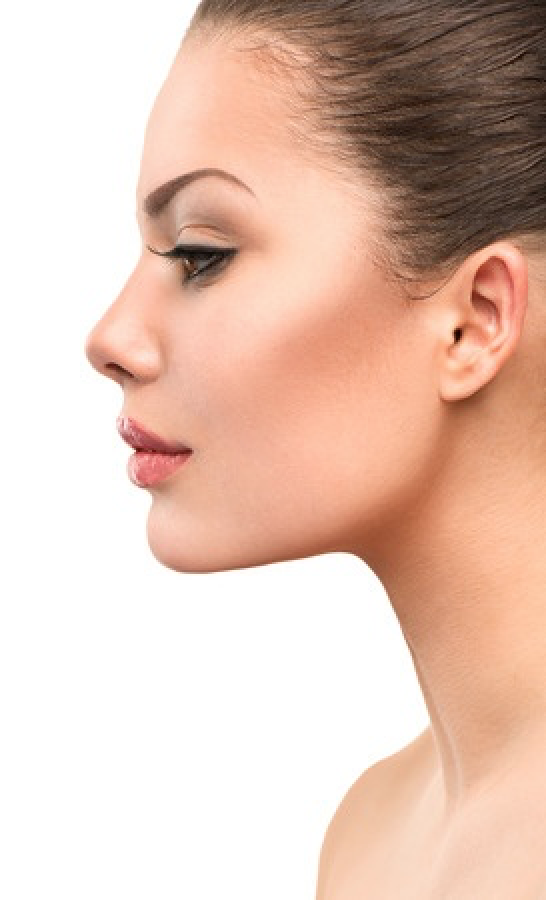
During your consultation you will explain any issues you may have with your nose, cosmetic or functional. After speaking with Dr. Abramson you may find that you could potentially benefit from improving both aspects. A thorough examination of your nose will be performed so he can assess which procedure will work best in your specific case. With your aesthetic goals in mind combined with his examination findings, a personalized procedure plan will be created to give you optimal results.
Some patients opt to receive additional facial surgery in conjunction with their Rhinoplasty. All questions and concerns will happily be addressed at this time. Pricing will also be discussed so you are fully aware of all aspects of this process. You will be given a list of preliminary requirements to complete prior to your surgery. Following all instructions will help ensure giving you the best results possible.
Types of Rhinoplasty
No matter if you are coming to see Dr. David Abramson for a Primary or Secondary Rhinoplasty, he will deliver on your aesthetic desires.
Primary
Primary Rhinoplasty refers to surgery performed on the nose for the first time, whether cosmetic or functional. The goal of Primary Rhinoplasty is to address all cosmetic and functionality issues with one surgery, avoiding needing secondary surgery. This can be performed as either an open or closed procedure, as Dr. Abramson sees fit.
Secondary
Secondary Rhinoplasty refers to surgery performed on the nose after the patient has already undergone one or more previous nose surgeries. This is also sometimes referred to as Revision Rhinoplasty, which can refer to a secondary operation or more. This involves further altering the cosmetic look of the nose or changing/improving functionality from a previous surgery.
How is Rhinoplasty Performed?
Rhinoplasty is performed in-office under general anesthesia. Rhinoplasty involves one of two types of incisions. The type of incision will depend on what Dr. Abramson sees fit for your specific case.
Open Procedure
The open procedure is performed by making an incision through the tissue in between the nostrils. Skin and soft tissue of the nose tissue are lifted so that the surgeon can access the nose cartilage. Cartilage is trimmed and sculpted into the new contour. Sometimes cartilage grafts are taken from other areas of the body. The skin and tissue are then redraped over the nose, and the incisions are sutured. Swelling and minor discomfort are normal, but recovery generally takes only one or two weeks. Any scarring that may come from this procedure is small and fades overtime.
Closed Procedure
The closed procedure involves similar steps as an open procedure; however, the incision is made inside the nose, not externally. This makes for non-visible scarring, and the skin does not need to be lifted. There is less swelling and damage to the tip of the nose associated with this procedure. This procedure often tend to be shorter than open procedure.
A rhinoplasty, commonly called a nose job, is a popular plastic surgery for people who are dissatisfied with the shape or size of their noses. While rhinoplasty has specific cosmetic benefits, it may also help to improve nasal function and breathing problems that affect sleep and exercise.
Typically, the goal of rhinoplasty surgery is to revise the appearance and functionality of the patient’s nose while considering their facial structure and skin type. Dr. David Abramson utilizes his skill in the science and art of rhinoplasty to provide his patients with desirable and long-lasting results. We encourage you to call our office and schedule a consultation to discuss open and closed rhinoplasty in Englewood.
Before and During the Procedure
Prior to surgery, Dr. Abramson will conduct a thorough history and examination to determine how to accomplish the procedure. During the evaluation, he will discuss the advantages and disadvantages of an open and closed rhinoplasty procedure for Englewood patients.
There are two ways to access the structures inside the nose. The first is to make an incision in the center of the nose along the column that connects both sides, known as an open rhinoplasty. The second is a closed procedure where incisions are made on the inside of the nose. Each approach has advantages and disadvantages for the surgeon, the patient, and the type of work that can be done. Dr. Abramson and his talented staff can answer any questions you have about this process.
What Are the Pros and Cons of Open Rhinoplasty?
Open rhinoplasty surgery gives the surgeon greater access to the anatomical structures, and allows Dr. Abramson to analyze a patient’s nasal anatomy and do the most detailed work. It also provides greater precision and reshaping of the nose’s delicate structure.
Using cartilage grafting techniques for longer-lasting support allows for improved accuracy and better control, which is ideal for complicated nasal reconstructions or revisions of previous surgery.
However, an open rhinoplasty can sometimes leave a small scar in the columella that may be visible but often fades over time. The recovery also takes longer for open rhinoplasty than a closed one in Englewood, and the surgery generally requires more time to perform. Similarly, because the area is opened for greater access, there can be a higher risk of infection or bleeding.
Closed Rhinoplasty’s Advantages and Disadvantages
A closed rhinoplasty uses incisions made inside the nostrils, leaving no visible external scar tissue. Because the surgeon must work through these incisions to adjust the nasal bone and cartilage, he will have less visibility and access to those structures.
With a closed rhinoplasty, there is no external scarring, less swelling, and a shorter recovery time. Additionally, the surgery itself is quicker and considered less invasive since the nasal skin is not lifted off the underlying structures.
While closed rhinoplasty does not leave scarring, it can hinder the surgeon’s view, which may limit some of the adjustments. Complex reconstructions or revisions cannot be completed, and there is potential for less accuracy, which means precise modifications may not be attempted. A closed rhinoplasty requires a highly skilled and experienced surgeon to achieve good results.
Which Type of Rhinoplasty Should I Choose?
The ideal rhinoplasty procedure for you is the one that achieves optimal results, and best meets your goals. Dr. Abramson will discuss your cosmetic concerns and the techniques that will best help you meet your needs. Depending on the type of reconstruction or repair needed, an open or closed rhinoplasty procedure may be recommended.
Find Out More Open and Closed
The choice between an open and closed nasal surgery will largely depend on how much work is to be done and whether you are okay with some small scarring afterwards.
If you are considering a rhinoplasty, we encourage you to call our office today and schedule your consultation. Dr. Abramson and his diligent staff can provide more information on open and closed rhinoplasty in Englewood.
Recovery
A nasal splint is applied after your Rhinoplasty procedure. It is usually worn after the procedure for 5 to 7 days. It is more ideal to take a bath rather than a shower while wearing the splint or bandaging. Bruising below the eyes is very common and can last for 7 to 10 days. Patient can usually return to work in approximately a week, although final results can take anywhere from 6 to 12 months.
During the recovery period you should refrain from making over-the-top facial expressions. Do not blow your nose until instructed by the doctor. If you wear glasses, you may consider taping them to your forehead since you will be unable to rest them on your nose for a while. You should also avoid partaking in strenuous activities for about a month. Pain medication can be prescribed if you feel as though you may need it. Typically, patients return to their social lives in just a couple weeks without anyone recognizing signs of a surgical procedure.
Many people may be interested in getting nasal surgery, but are ambivalent about what the recovery period might look like. While rhinoplasty is a common and often requested procedure, it is helpful to know what to expect during recovery from a rhinoplasty in Englewood. To find out more about the amazing facial surgeries offered by Dr. Abramson, connect with us today.
How Long Is Recovery After Rhinoplasty?
Recovery from rhinoplasty happens in several stages, but it can take up to one year for the final shape of the new nose to become apparent. In the first few weeks, most people see gradual changes as the swelling disappears and the tissues begin to heal.
The soft tissue of the nose tends to experience swelling longer than other places in the body, so it can take several months for the final shape to appear. Most people awaken from surgery with packing or a splint on the inside of the nose, and bandages or a splint on the outside. This helps to protect and support the new shape as the tissues, bone, and cartilage heal.
After surgery, Dr. Abramson will give you specific, detailed instructions on how to care for yourself so you get the best possible outcome and reduce the risk of postoperative complications. However, no matter what cosmetic changes were made with a rhinoplasty, patients in Englewood should follow several tips during recovery.
Do Not Blow Your Nose
You must not blow your nose after surgery for several weeks, or it will disrupt the results and potentially damage the tissue. Do your best to avoid sneezing as well. If you have allergies, ask your surgeon and primary care physician about using medications to prevent sneezing.
Tips to Keep the Swelling Down
Keep your head elevated at all times, including while sleeping. This helps to keep the nasal passages open and relieve swelling and pain. An ice bag can also help with swelling, but talk to your surgeon before using one since it limits blood circulation. This can reduce inflammation and speed recovery, but may damage delicate surgical work.
Anti-Inflammatory Medication
Anti-inflammatory medications may promote nasal swelling, which can increase the risk of bruising and slow healing. Discuss anti-inflammatories with your surgeon before using them during recovery, including over-the-counter medicine and prescriptions you may have at home.
Get Plenty of Rest
Prioritizing downtime and sleep when you feel tired is integral to helping your body recover. When you are asleep, your body spends energy repairing damaged tissue. A lack of sleep can slow down the process of healing.
Avoid Nicotine and Alcohol
You should not use nicotine or drink alcohol during recovery. Nicotine impairs blood circulation and blocks nutrients from reaching the wound, slowing healing and increasing the risk of infection and other complications. Alcohol also impacts recovery by reducing the healing of tissue damage and slowing immune function.
Eating and Spicy Food
After surgery, your body needs a wide range of vitamins and other nutrients to repair and recover quickly, including protein, carbohydrates, and fats. However, spicy food can irritate your nasal passage and increase the risk of swelling and infection. Spices like chili powder, salt, and red pepper irritate your sinuses and should be avoided during recovery.
How to Wear Glasses
The bones in your nose are repositioned during rhinoplasty, so glasses must be avoided for the first five weeks of healing. However, contact lenses can be worn the day after surgery. To wear your glasses, add small pieces of clear tape to each lens and tape the glasses to your forehead just off the bridge of your nose.
Follow-up Appointments
Attending your follow-up appointments is important so Dr. Abramson can evaluate the results and identify any complications early. During these meetings, he can also answer any questions about your recovery.
Strenuous Activity
The main objective during recovery is to protect your nose and reduce any strain on the sutures. This means avoiding activities that may increase blood flow and injure your nose, including cardio or aerobic exercise. Light walking is preferred and should be a part of your daily fitness to support recovery from your Englewood rhinoplasty.
Facial Expressions
Over-the-top facial expressions, including big smiles or laughter, can stress the sutures, bones, and cartilage and should be avoided. The exterior or interior splint on your nose will make smiling and laughing uncomfortable, which can serve as a reminder to limit expressions.
Sunlight
Avoid getting too much sun in the weeks after surgery. The skin over your nose is highly sensitive after rhinoplasty, and you are at a greater risk of getting burned.
Take a Bath
It is advisable to take a bath instead of a shower while you have an external splint or bandage over your nose. If you had an open rhinoplasty, your surgeon should clear you before you get in the shower and get the area wet.
Learn More About Recovery
Closely following Dr. Abramson’s postoperative instructions helps lower the risk of complications, including infection. During your appointment before surgery, you will receive all the necessary information and have time to ask questions about the procedure and your recovery.
If you believe rhinoplasty may align with your cosmetic goals, we can provide a thorough overview of surgery and recovery from a rhinoplasty in Englewood.
Price
The price of your Rhinoplasty will depend on the extent of the work needed in your case. Undergoing additional procedures, whether face or body, will change the price. All of details regarding your specific case will be discussed during your private consultation with Dr. David Abramson.
Want to see your new you before the procedure?
With Crisalix's 3D imaging technology you can see how you would look post-procedure if full 3D.
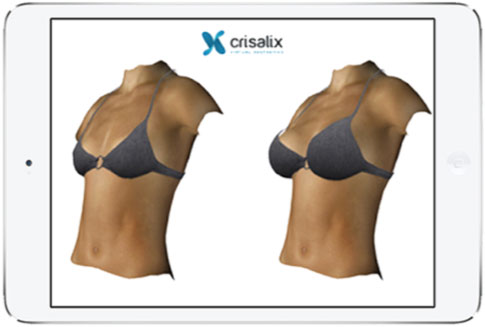 Learn More
Learn More